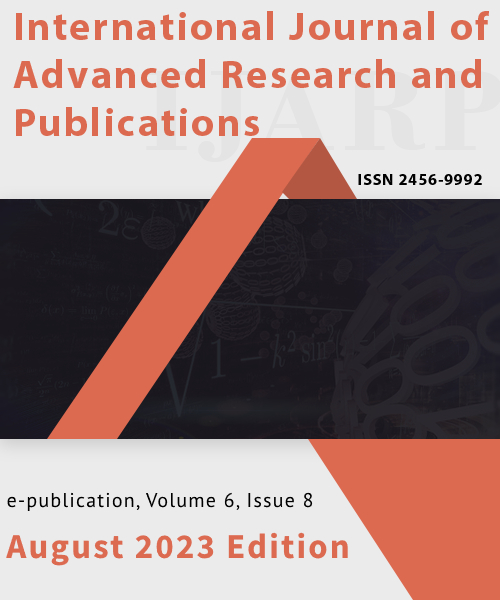Enhancing Library Silence: NOISYFIER-SVM With Machine Learning Analysis
 Volume 6 - Issue 8, August 2023 Edition
Volume 6 - Issue 8, August 2023 Edition
[Download Full Paper]
Author(s)
Judy Ann T. Nasuli1, Reinalene F. Tongson2, Hernan John Rafael M. Abilla3, Joshua Ysabel P. Antonio4, Aichelle C. Almazan5
Keywords
Library Noise, Support Vector Machine, Noise, Noise Detector, and Notifying Device
Abstract
Noise remains a persistent concern in library environments, affecting both library patrons and facilitators alike. In response to this issue, the present research delved into a study aimed at addressing this isolated challenge. The primary objective of this investigation was to design and develop a novel device employing robotics and Arduino mechanisms to mitigate the negative impact of noise within library premises. The device's capabilities were thoroughly tested at Luis Y. Ferrer Jr. Senior High School, providing crucial insights into its effectiveness. The device's functionalities were calibrated according to meticulous planning and 3D design executed by the researchers. The Noisyfier incorporates a Sound Sensor Module capable of receiving and detecting sound intensity, while an alarm system with a buzzer is triggered when the sound level surpasses a predefined decibel limit. Precision testing was conducted to validate the device's performance, and a strong positive correlation with conventional decibel meters was observed. By utilizing MATLAB's Support Vector Machine (SVM) algorithm with a threshold value of 81.5 to discern the binary association between the 'device' and 'db meter,' the obtained correlation coefficient of 0.90476 and classification accuracy of 0.98556 showcase the device's robust performance in noise detection. The Noisyfier demonstrated remarkable efficacy as a noise monitoring device specifically tailored for library environments, and this claim is substantiated by rigorous statistical data and comprehensive analysis. To facilitate further research endeavors in this area, future researchers are encouraged to explore durable power sources and consider device modifications that enhance its portability and ease of use.
References
[1]. Braat-Eggen, E., Reinten, J., Hornikx, M., & Kohlrausch, A. (2021) The Effect of Background Noise on a “Studying for an Exam” Task in an Open-Plan Study Environment: A Laboratory Study. Front Built Environ, 7(687087). doi: 10.3389/fbuil.2021.687087
[2]. Lambert-Porter, R. (n.d.). Designing Libraries & Learning Centres for Good Acoustic.
[3]. Lange, J., Miller-Nesbitt, A. & Severson, S. (2016). Reducing noise in the academic library: the effectiveness of installing noise meters. Library Hi Tech, 34(1). 45-63. doi: 10.1108/LHT-04-2015-0034
[4]. Yelinek, K., & Bressler, D. (2013). The Perfect Storm: A Review of the Literature on Increased Noise Levels in Academic Libraries. College & Undergraduate Libraries, (20)1.
[5]. Zotoo, I., Liu, G., & Lu, Z. (2022). International Journal of Library and Information Science Studies, 8(1). 9–18. doi: 10.37745/ijliss.15/vol8no1pp.9-18